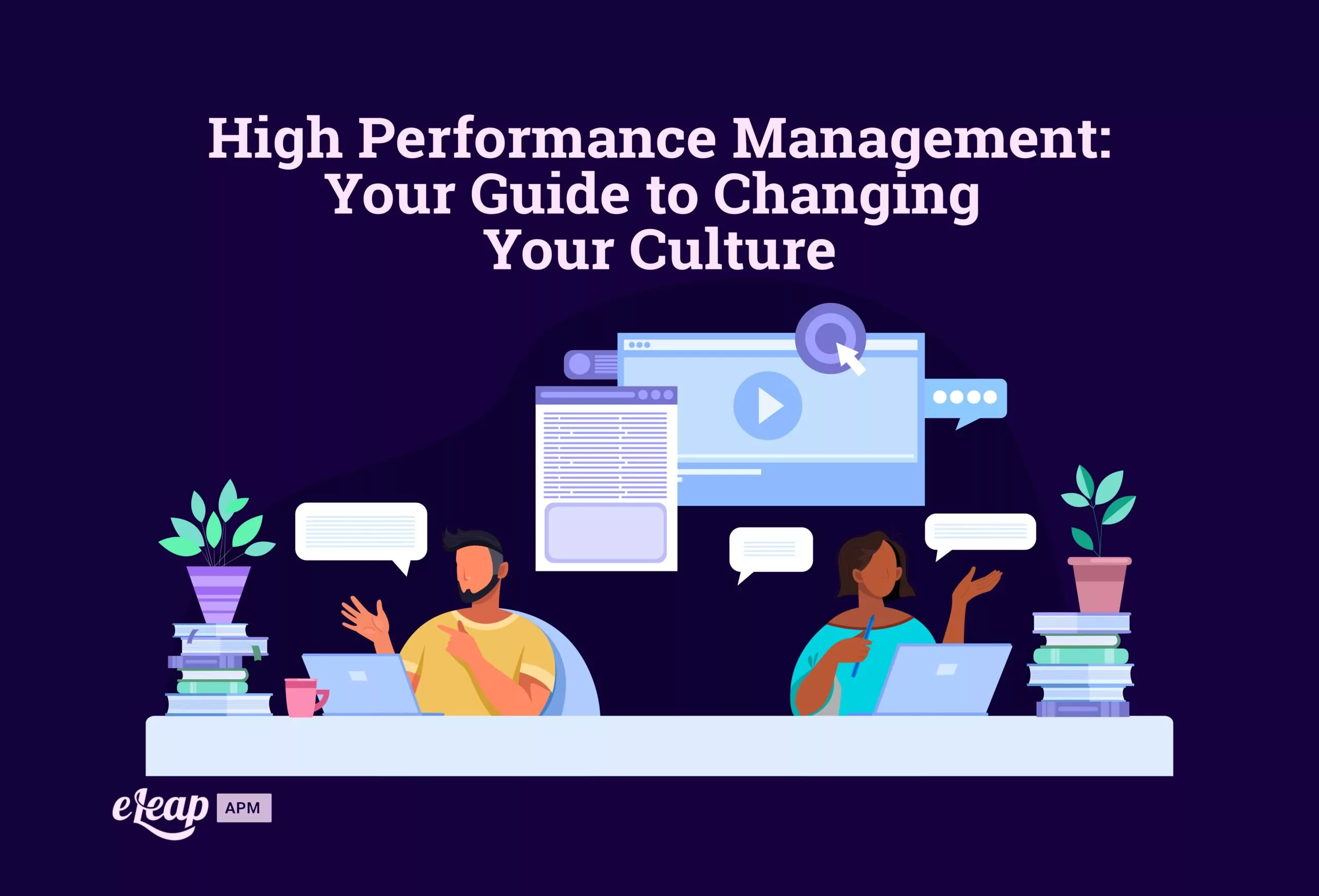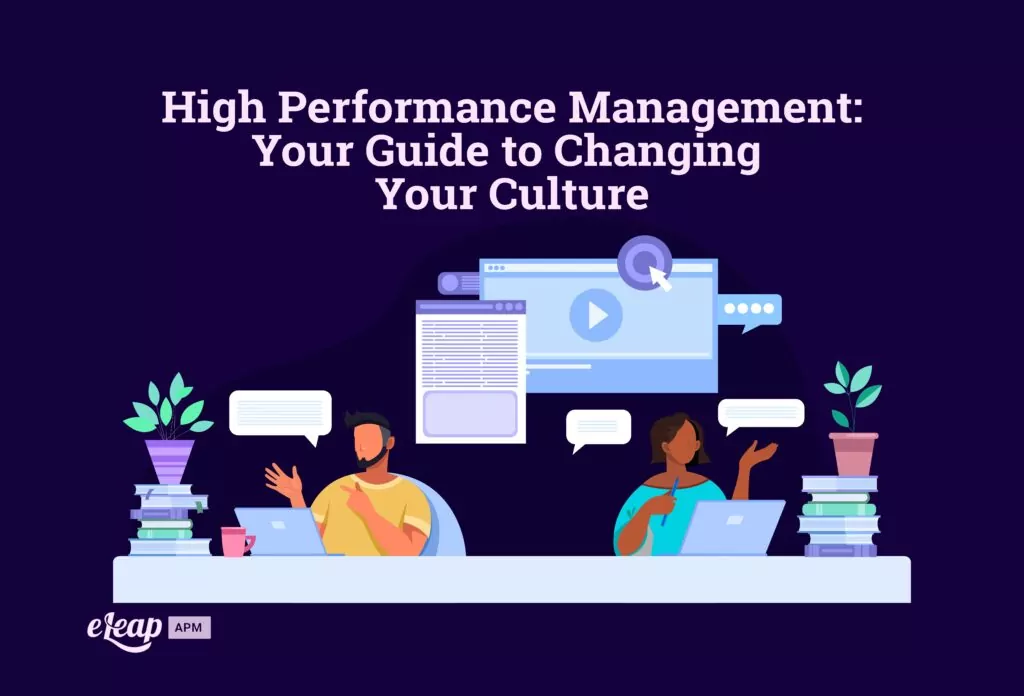High Performance Management: Your Guide to Changing Your Culture
High-impact performance management, is a continuous process

Performance management (PM) has been part of organizational management and growth strategies for a very long time. However, traditional approaches to improving employee performance have proven less than effective. Organizations today must take very different steps to define performance-related goals and objectives and then motivate employees to reach and surpass them. High performance management offers the ability to get around the shortcomings of older PM methodologies.

What Is High Performance Management?
High performance management, sometimes called high-impact performance management, is a continuous methodology designed to achieve lasting improvement in team performance across the board. It is not an annual process but an ongoing one. It’s not something to use as a goad for employees. “Meet your productivity goals, or we’ll withhold your cost-of-living raise!” is not the mentality here. It is a collaborative approach, not a punitive one.
Why Choose High Performance Management Over Old-Style PM Methods?
Why should you put in the time and effort to shift your culture to one focused on high performance? Deloitte points out some interesting statistics for both conventional performance management and high performance management:
- Most employees despise conventional PM approaches.
- Conventional PM methods routinely fail to deliver improved performance.
- Processes and models are increasingly irrelevant – it’s more about purpose and mindset, which are the focuses of high performance management.
- Effective, ongoing feedback can be used to drive ongoing improvements in workflow, but conventional PM only occurs once or twice per year.
- High performing organizations are 1.4 times more likely to meet financial targets, 2.2 times more likely to improve efficiency, and almost 5 times more likely to manage change correctly.
- High performing organizations are 4.5 times more likely to continuously develop leaders, and 2.7 times more likely to boost employee engagement.
Those are critical advantages, and most organizations cannot afford to leave them on the table. The question then becomes one of how to become a high performing organization. Is it just about changing the frequency of your performance reviews?
A lot goes into changing your organization – it’s a foundational thing that will require taking a deep dive into your culture to identify problems and make necessary changes.
Four Steps to Creating a High-Performance Organization
High performance management isn’t something that begins with managers and extends to employees. It’s something that needs to be at the core of the organization. To achieve this, you will need to take four specific steps, which we’ll discuss below.
1. Motivate Change
The first step here is to motivate change. This begins at the foundational level, and you’ll need to assess your current culture. Where does your organization currently stand in terms of performance management? Do managers still use the carrot-and-stick motivation method? If so, you have your work cut out for you.
The goal of this step is to instigate foundational change in order to build a company culture that values excellence and strives for success while simultaneously seeking feedback and embracing continuous learning and development. Without continuous learning and development, ongoing performance improvement is impossible, so L&D and PM are inextricably linked to one another.
Once you’ve assessed your culture and determined where you stand, it’s time to evaluate the extent to which your managers and employees engage in effective PM-related behavior. For many organizations, this is rare. Most employees loathe performance reviews, and most managers are ineffective in delivering those reviews. This isn’t necessarily a reflection on the managers but on the process itself.
To achieve organization-wide change, it’s necessary to get manager buy-in. You need to communicate the importance of high performance management and demonstrate how it fits with your culture. And remember that change does not come easily. Be prepared to put in the hard work necessary.
2. Lay Your Foundation
We started building the foundation with the first step, but here you’ll really put things into practice. Your first step is to identify and then scale back burdensome demands. Conventional performance management tends to focus on processes – completing forms and following specific steps within a particular amount of time.
Yes, those can be important to ensure that tasks are completed on time and that information is recorded for future use. However, they actually detract from an employee’s performance. To move to high performance management, you need to shift your focus and stop worrying so much about mundane administrative tasks and begin focusing more on high-value responsibilities.
3. Sustain Employee Behavior
The real goal of performance management is to identify wanted behaviors and then sustain them over time. To do that, employees will need the right tools and resources. This includes things like workstations and software, but it goes further. You should include learning and development-related resources, too, such as your learning management system and formal training/upskilling strategies designed to support both employees and the organization.
In addition to those, take the time to create “at a glance” aids that provide both managers and employees with visible reminders of responsibilities and duties. Automated tools also provide value and can help alleviate the burden of mundane, low-value tasks. Finally, don’t neglect the very real value that ongoing feedback and communication between managers and employees can have on performance.
4. Monitor and Improve
The final step is actually two combined into one. You must monitor employee and manager performance and then continually find ways to improve. Those improvements might be iterative steps rather than giant leaps forward, but continual, ongoing improvement is more desirable than the occasional big jump. It delivers better overall results, as well.
It’s also important to monitor results beyond the outcome of employees’ actions. Take time to measure employee retention, improved knowledgeability, morale, engagement, and other key metrics that indicate success.
It’s Time for a Foundational Change
Conventional performance management methods are worthless. High-performance management offers the opportunity to change more than employee behavior, though. You can completely reinvent your organization’s culture and create something better and stronger that will set you apart as an employer of note.